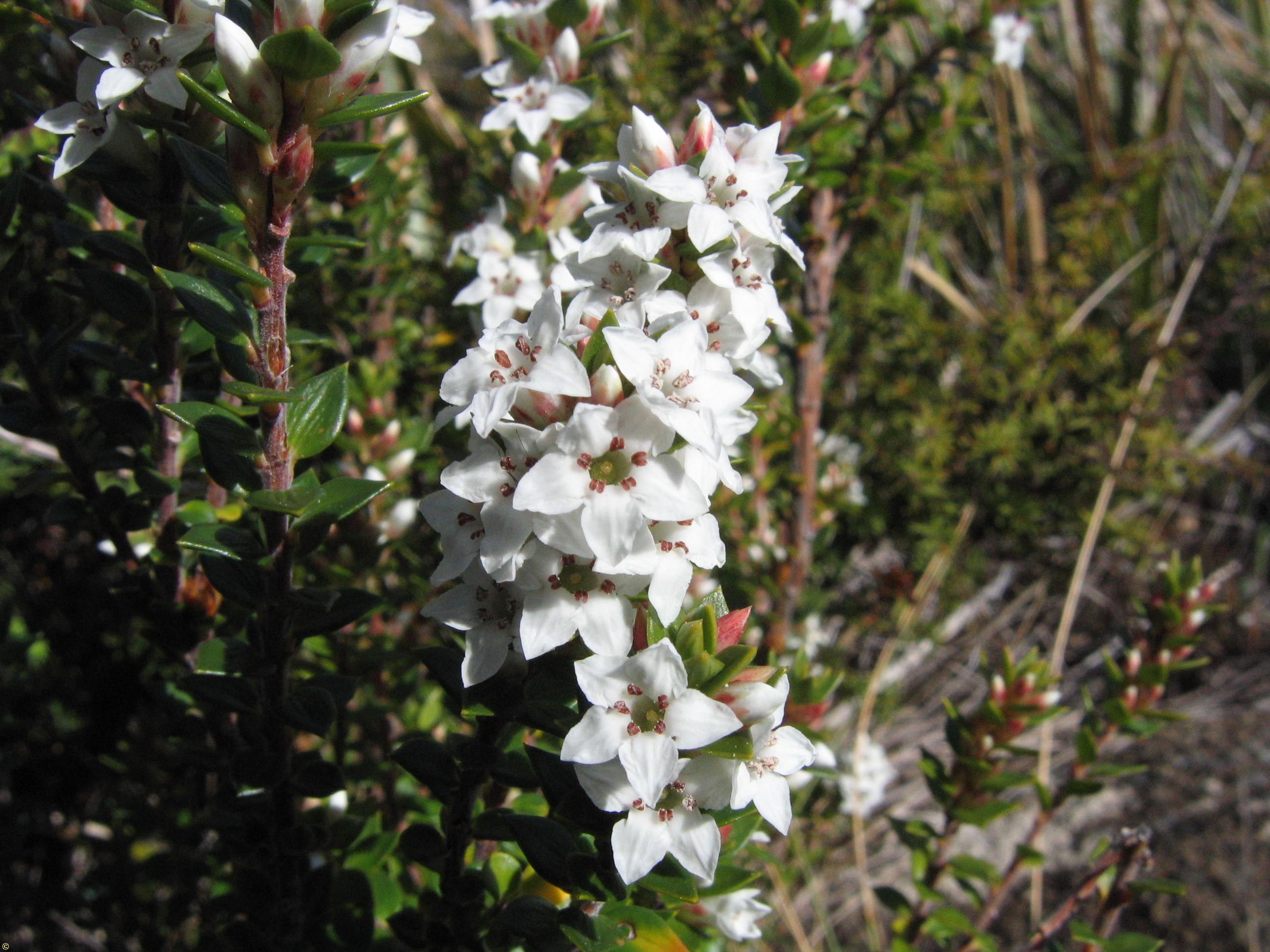Scientific Name: Epacris myrtifolia Endemic Having a natural distribution confined to a particular geographic region
Common Name: cliff heath
Family Classification (Clade): Eudicots
Family: Ericaceae
Form Description: Stout, erect, bushy shrub.
Height (m): 0.3 – 0.6
Flowers: White 5mm long, solitary in leaf axils, crowded near branch ends in dense showy heads.
Fruit: Papery capsule
Municipality
Plant Communities
Habitat Notes
Local near the coasts in the south, Recherche Bay and Tasman Peninsula.
Site Tolerance
Exposed, Moist, Windy
Soil Tolerance
Fertile, Loam, Nutrient-poor, Sandy, Well-drained
Propagation Calendar
-
Flowering Month
Jan Feb Mar Apr May Jun Jul Aug Sep Oct Nov Dec -
Seed Collecting Month
Jan Feb Mar Apr May Jun Jul Aug Sep Oct Nov Dec -
Sowing Month
Jan Feb Mar Apr May Jun Jul Aug Sep Oct Nov Dec -
Cutting Month
Jan Feb Mar Apr May Jun Jul Aug Sep Oct Nov Dec
Propagation Method
Seed Information
Seed Collection
When lower capsule on the stem has opened the capsules higher on the stem are ready for collection. Dry until capsules open then lightly thresh to extract seed. Clean by sieving.
Seed Treatment Method
Bog Method The seeds of many wetland species need to be kept wet to germinate. Punch a hole in the side of a recycled polyfoam box so that it holds water to the required depth. Sit the tubes in the box to germinate. Once germinated, punch holes in the bottom of the box to allow drainage.
Seed Treatment Notes
Difficult to grow from seed. Smoke treatment has been found to significantly improve results for species with smaller seeds. Species with woody fruits and larger seeds are not responsive. Seed of some species exhibits a dormancy which is reportedly overcome by storage in a dark place for 3- 6 months. The bog method and older seed may improve results. If using bog method seed should be spread over surface of propagation mixture. If the medium is then kept constantly moist, germination should occur within 10-20 weeks.
Germination Time
10-20 weeks
Cutting & Division Information
Grown from tip cuttings, best taken in March and placed into individual tubes. This avoids problems in the growing on process due to the very fine root systems.
